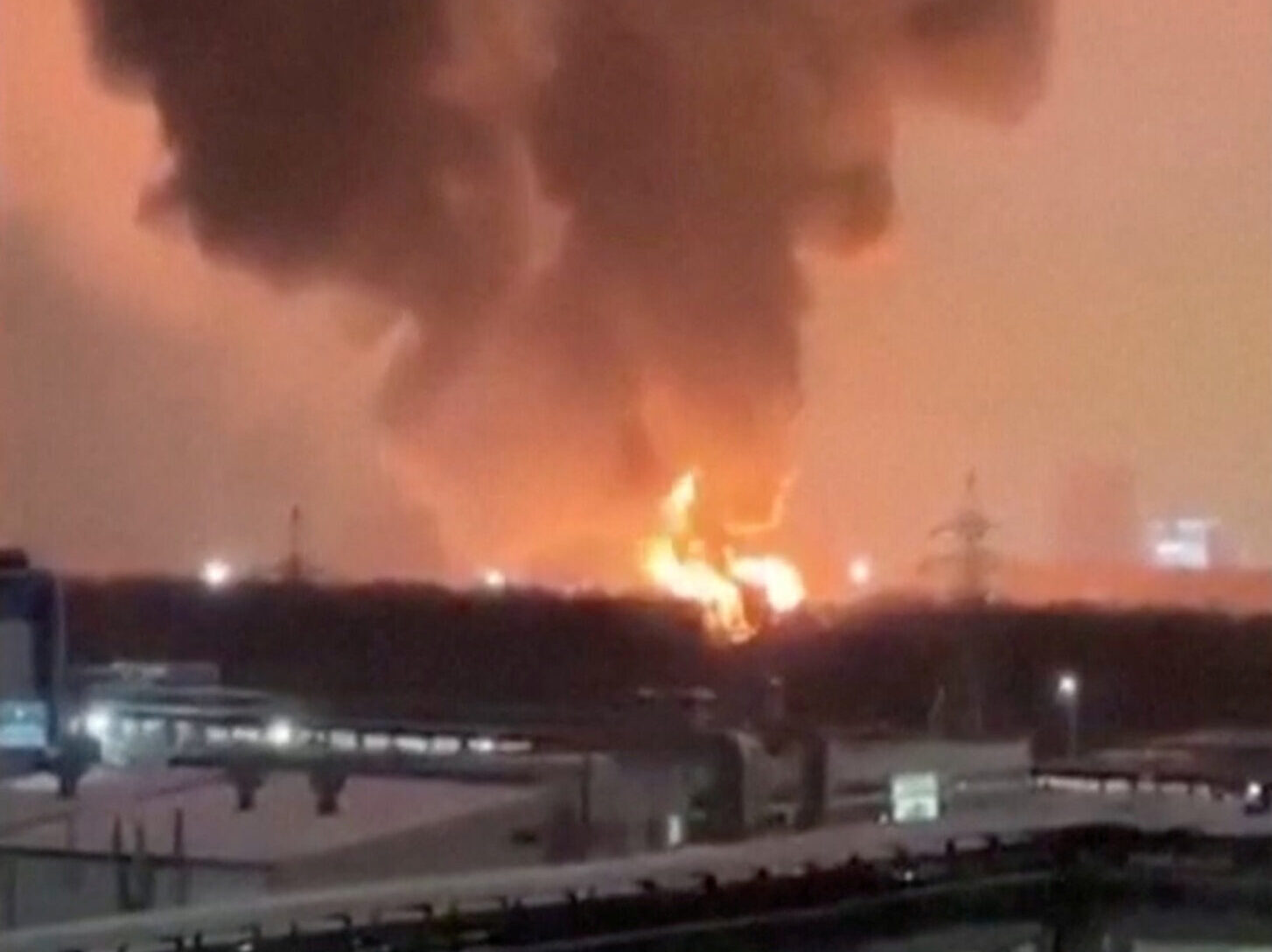Ukraine launched what officials termed as the country’s “most massive” air attack of the war this week as Kyiv seeks to bring Putin’s invasion home to Russia. In the early hours of January 14, Ukrainian drones and missiles struck a series of strategic targets in multiple Russian regions including Bryansk, Saratov, Tula, and Tatarstan. The strikes at distances of up to 1000 kilometers from the Ukrainian border underscored Ukraine’s growing capacity to conduct long-range bombardments against high-value Russian targets.
This week’s attack was notable both for its scale and sophistication, with drones and missiles deployed in coordinated airstrikes that exploited the weaknesses of Russia’s air defenses. Representatives of Ukraine’s 14th Separate Regiment of Unmanned Aerial Systems confirmed that decoy drones were used to distract and overwhelm Russian air defenses, creating openings for missiles to hit primary targets. Once defenses were compromised, some targets were then struck by additional waves of long-range drones.
While Russian officials remain tight-lipped over the scale of the damage inflicted, media reports and open source data indicate that a range of military and industrial objects were hit. Targets included oil refineries and storage facilities, an airbase used for attacks against Ukraine, and various industrial plants involved in the production of materials critical for the Russian war effort.
These simultaneous strikes against multiple high-priority targets deep inside Russia highlight Ukraine’s ability to conduct increasingly complex long-range air operations. The attacks of January 14 required close coordination between Ukrainian drone and missile crews along with military intelligence and special operations units.
Ukraine’s rapidly evolving drone industry is at the heart of the escalating air war inside Russia. Since the onset of Russia’s full-scale invasion almost three years ago, Ukrainian drone production has increased dramatically, with hundreds of new companies from within Ukraine’s vibrant tech sector emerging to develop and manufacture a wide array of different drone models.
The Ukrainian authorities have sought to make the most of this potential, establishing the Brave1 platform in spring 2023 to streamline cooperation between the Ukrainian military, state organs, private sector developers, and investors. In summer 2024, Ukraine became the first country to establish a new branch of its military dedicated to drone warfare. The creation of Ukraine’s Unmanned Systems Forces underlined the country’s emphasis on innovation as Kyiv seeks to compensate for Russia’s often overwhelming advantages in terms of manpower, firepower, and other vital military resources.
In addition to an expanding arsenal of long-range strike drones, Ukraine is also working hard to develop domestic missile production. In recent months, Ukrainian President Volodymyr Zelenskyy has showcased a number of new missiles as Kyiv looks to reduce its dependence on Western partners for the supply of missiles capable of hitting targets inside Russia.
This emphasis on domestic drone and missile production is part of a broader shift away from reliance on foreign military aid. It also reflects longstanding frustration in Ukraine over the reluctance of the country’s partners to authorize attacks inside Russia due to fears of possible retaliation from the Kremlin. While US President Joe Biden partially lifted restrictions on strikes against Russian targets in late 2024, President-elect Donald Trump has since been critical of the decision. This has added weight to arguments that Ukraine must rely on its own drones and missiles to strike back against Russia.
Eurasia Center events

The impact of Ukrainian airstrikes inside Russia goes far beyond disruption to military logistics, damage to oil refineries, and reductions in Russia’s military output. Together with the ongoing Ukrainian occupation of hundreds of square kilometers in Russia’s Kursk region, Ukraine’s air war is undermining the illusion of Putin’s invulnerability and eroding Russian confidence in the Kremlin’s ability to defend the country.
Since February 2022, the Putin regime has gone to great lengths to shield the Russian public from the consequences of the war in Ukraine while maintaining an air of normality. However, frequent footage on social media of burning Russian infrastructure and powerful Ukrainian airstrikes is now directly challenging Moscow’s tightly controlled narrative. This is causing a visible change in mood, with even leading regime propagandists such as Vladimir Solovyov now voicing their displeasure over the failure of Russia’s air defenses.
Growing signs of demoralization within Russia reflect the sobering realization that the country’s existing air defenses are unable to cope with Ukraine’s growing deep strike capabilities. For Kyiv, this represents an important window of opportunity. In all likelihood, Russia will eventually address the vulnerabilities of its vast military and industrial infrastructure to drone and missile attacks. However, if Ukraine can continue expanding the current air offensive in the coming months, it could succeed in striking a significant blow to the Russian war effort.
For now, Ukraine’s air attacks are sending a clear message to Moscow and to Kyiv’s own partners that the Ukrainian military is capable of escalating on its own terms and does not share Western concerns over so-called Russian red lines. Maintaining this momentum and securing the means to continue offensive strikes inside Russia will be paramount to determining not just the direction of the war, but also its eventual outcome.
Maria Avdeeva is a Ukrainian security analyst and strategic communication expert.
The views expressed in UkraineAlert are solely those of the authors and do not necessarily reflect the views of the , its staff, or its supporters.

The Eurasia Center’s mission is to enhance transatlantic cooperation in promoting stability, democratic values and prosperity in Eurasia, from Eastern Europe and Turkey in the West to the Caucasus, Russia and Central Asia in the East.
Image: Smoke and flames rise from a fire after an explosion near an industrial site in Kazan, Russia, in this screen grab obtained from a social media video released on January 14, 2025. (Social Media/via REUTERS)










